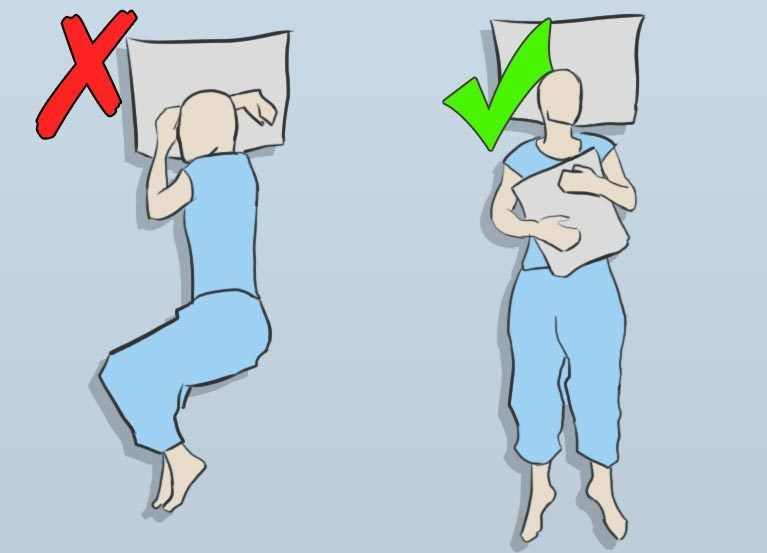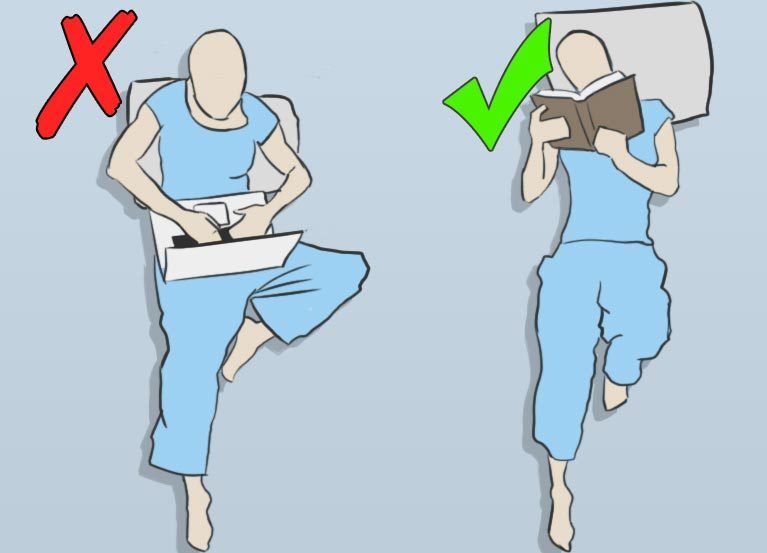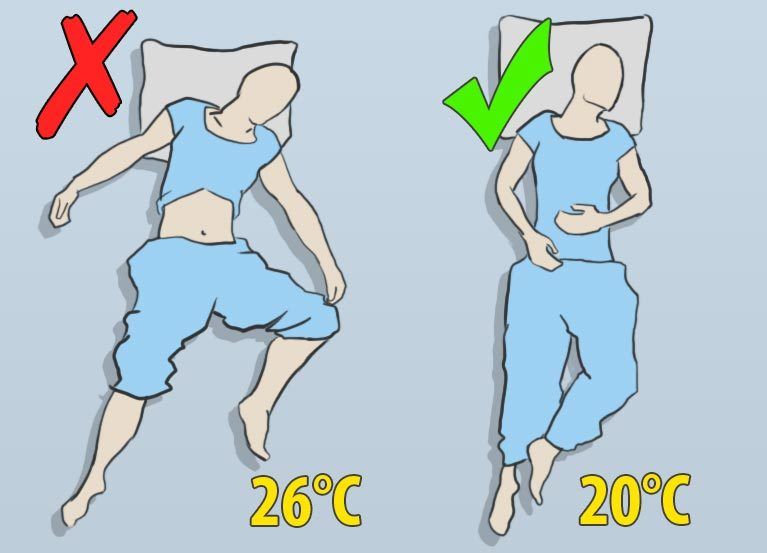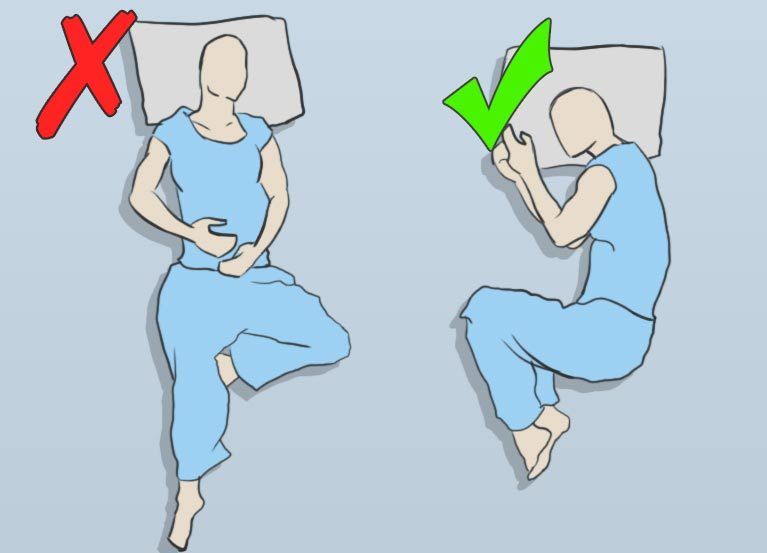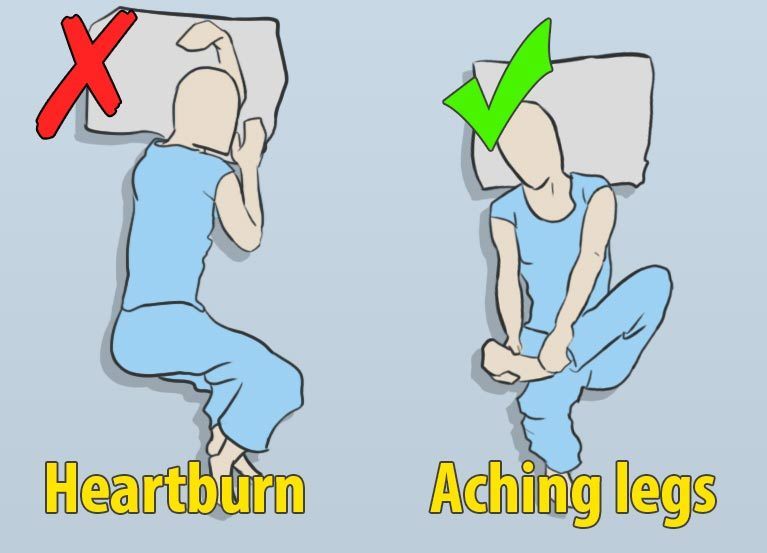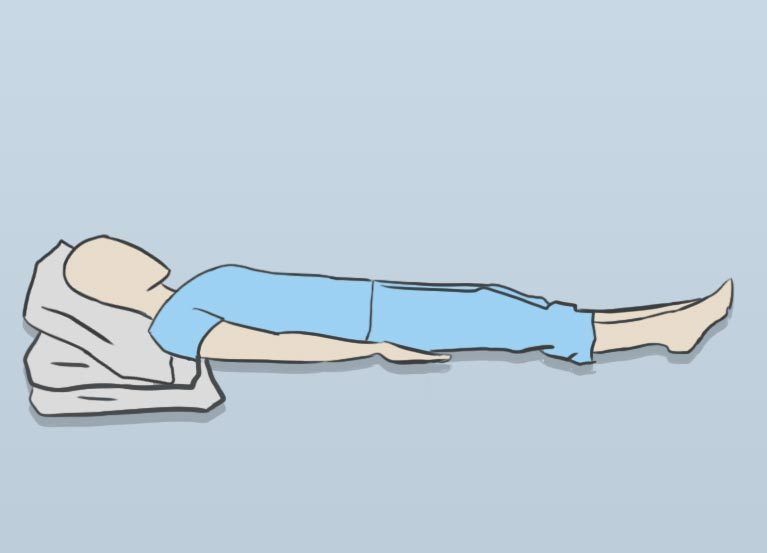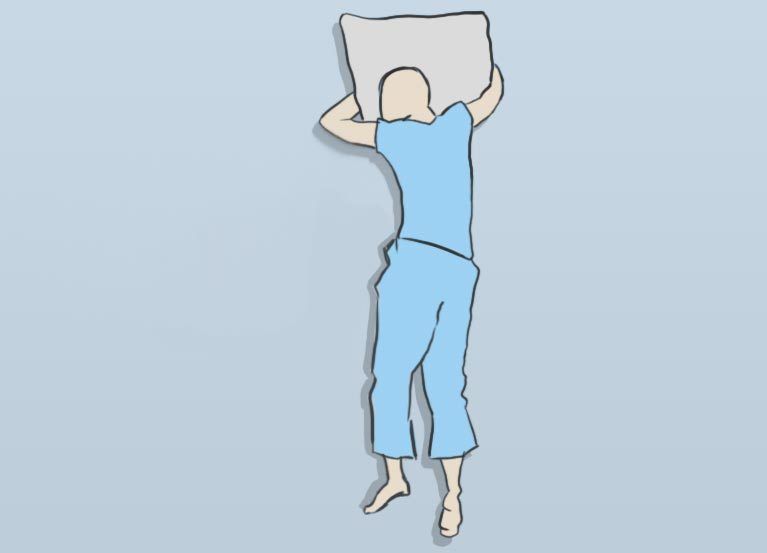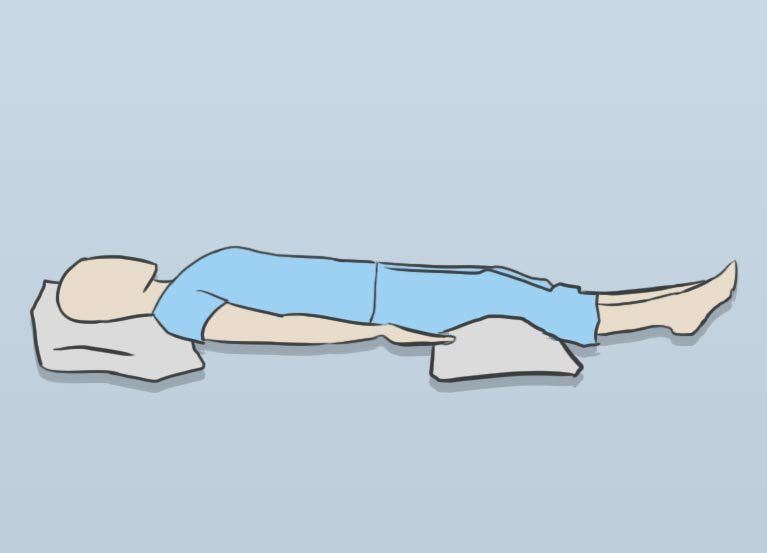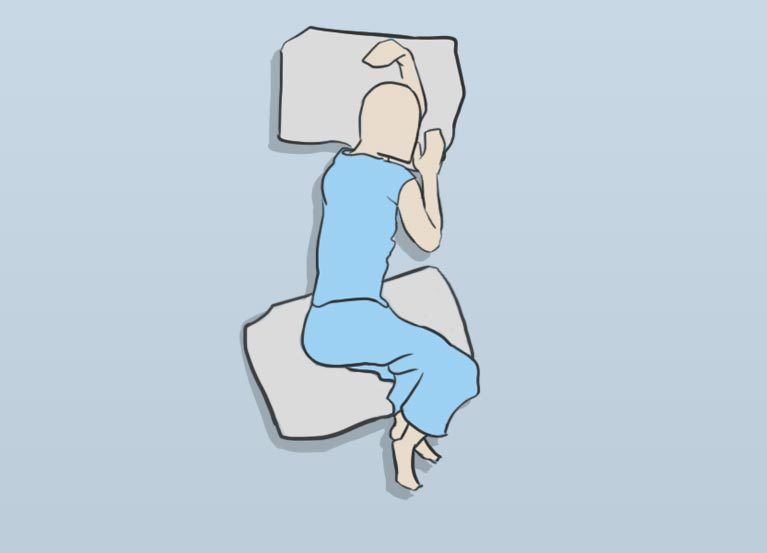The Best Sleeping Positions for Each Health Issue

What most people don’t know is that we spend around 1/3 of our life sleeping. That means we spend the same amount of time lying in our bed, so we should pay more attention to our sleeping position as well as our mattress and pillow.
Sleeping on our side, back, or stomach can be connected to things like snoring, back pain, sinuses, hypertension, and trouble staying asleep.
In fact, each sleep position can cause a specific health problem, as well as prevent or ease another one.
Here are several common health problems that can be relieved by sleeping in a certain position.
Shoulder Pain
Avoid sleeping on your stomach to prevent misalignment of your shoulders, which can further worsen your pain.
Also, don’t sleep on your side, especially on the affected one (1)
Instead, sleep on your back with a thin pillow underneath your head, and another one on your stomach. Hug the one on your stomach to help your shoulder stay in a stable position.
Another option is to sleep on a side that’s not painful.
Sleep with your legs slightly pulled up towards your torso and a pillow between the knees.
Also, be careful not to keep your hand under your head while sleeping.
Back Pain
Sleeping on an overly soft mattress is not recommendable for people with back pain. That’s because you have to maintain the natural spine curves – something for which you’ll need a firmer mattress.
The best position for back pain is sleeping on your back with a pillow under the knees. This position will relieve the tension in your tendons and maintain the normal curves of the spine. You can also support your lower back with a small rolled towel.
But, if the stomach position is your only option, make sure you place a pillow under the lower part of your abdomen.
For those who sleep on their side, it’s recommendable to sleep in a fetal position with their legs pulled up slightly toward their torso, while maintaining the natural curves of the spine.
Also, it’s best to place a small pillow between the knees to reduce the stress in the lower back area.
Neck Pain
If you are suffering from neck pain, it’s best to support it while sleeping.
The best option is sleeping on the back. However, you should put an orthopedic or roll pillow under your head and one under each arm.
For those who sleep on their side, choosing the right pillow is extremely important. It should be thick up to 6 inches, and as high as their shoulder’s width. This will maintain a normal neck position.
Choosing the right pillow is equally important for those who prefer sleeping on their stomach. They should sleep on the thinnest pillow possible. However, this position is the worst sleeping position for those with neck pain, so make sure you avoid it.
Troubles Falling Asleep
Avoid using your phones, computers, and tablets before going to bed, as the light from the screens disturbs the normal sleep-wake cycle.
Also, avoid drinking caffeinated beverages at least six hours before bedtime. These include energy drinks, coffee, black tea, and soda. You should also avoid chocolate.
Morning and afternoon exercise will improve your blood circulation, tone your body, and help you fall asleep easier.
Troubles Staying Asleep
Spending time on your gadgets can cause difficulties falling and staying asleep. So, try avoiding them at least a few hours before going to bed.
Also, avoid drinking alcohol in the evening as the alcohol affects the sleep cycle as well as the water balance in your body.
Another thing to keep in mind is the room temperature. Make sure it’s 20 to 22 degrees Celsius.
Troubles Waking Up
A lot of people have this problem, without knowing they can solve it quite easily. You should set the alarm for the same time every day, including the weekend. Also, try to go to bed early.
Snoring
Don’t sleep on your back if you are snoring, as your tongue falls backward in the throat in this position, narrowing the airway.
You should sleep on your side with your head supported on a firm pillow to prevent your head from tilting backward and causing snoring (2).
Leg Cramps
Muscle cramps that affect your thighs, calves, and feet can be another cause of low-quality sleep. They are usually linked to some conditions like nerve damage.
It’s best to consult your doctor, but in the meantime, stretch and extend your calf muscles before bedtime. You can also massage your legs or try some yoga poses right before going to bed.
Heartburn & Leg Pain
If you often have heartburn, sleep on your left side to prevent your stomach acid from coming back up into the food pipe (3)
If your legs hurt during the night, keep your legs lifted on a roll pillow. This will enable the accumulated venous blood to run downward, thus relieving the pain.
Another thing you can do to prevent leg pain at night is massage them right before going to bed. Also, avoid drinking caffeinated beverages at least six hours before going to bed.
Sinuses
Make sure you sleep on a firmer pillow to prevent the mucus from pooling into your sinuses (4)
Hypertension
If you have high blood pressure, sleep on your stomach with your face down. However, don’t forget to consult a doctor for proper hypertension treatment.
PMS Pain
To reduce the discomfort while sleeping during this period of the month, put a pillow under your knees. This will help keep maintain the normal arching of the spine, which, in turn, eases the PMS symptoms.
Digestive Issues
The stomach is located on the left side of the body, so make sure you sleep on this side if you often deal with digestive issues. The gravity will aid digestion.
Try sleeping in the right sleeping position depending on the problem you’re dealing with.
We hope these tips will help you relieve the pain and symptoms connected to some of the most common health problems.

